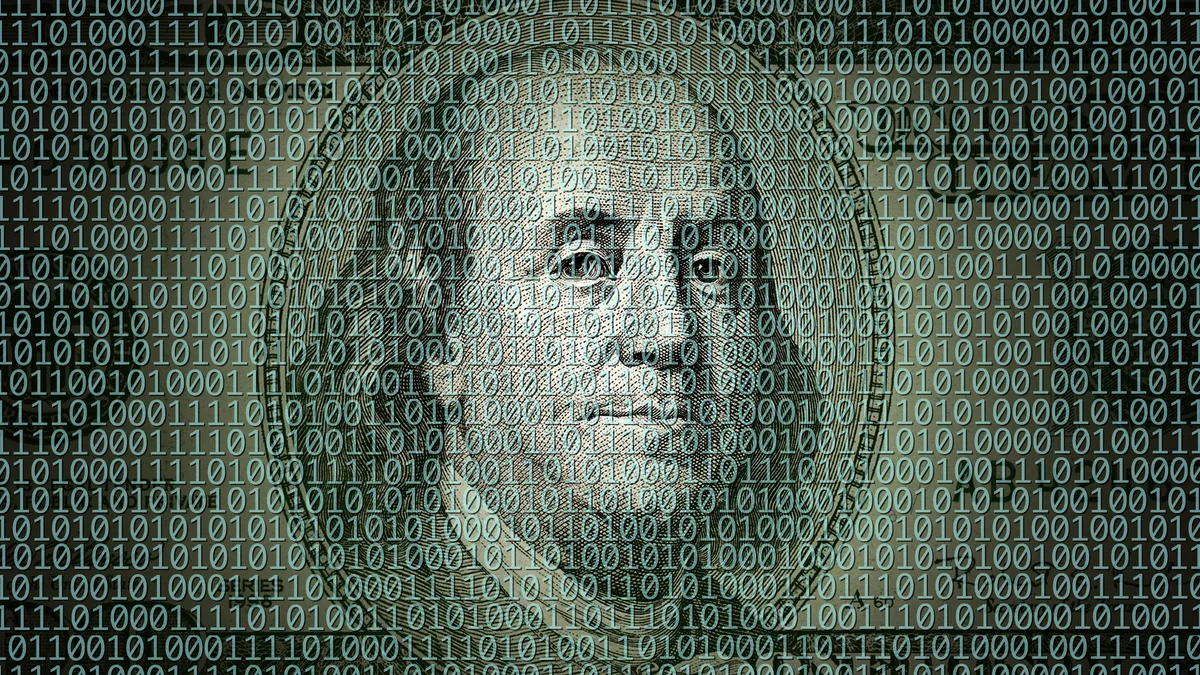One sure sign that the Federal Reserve faces an uphill campaign in any decision to pursue a central bank digital currency is the opposition of two groups that couldn't be more different.
In January, the Fed asked the public to comment on its 40-page report providing an overview of what a CBDC might look like and how it might compete with a proliferation of digital currencies.
Some 2,000 public comments were submitted earlier this year in response to the Fed’s request as it assesses the possibility of a digital dollar. In a series of pieces, Payments Dive has laid out the outright opposition of some commenters, including many from the banking industry, and the more tempered views of others, such as those in the payments and clearing sectors.
Interestingly, two disparate groups expressed strikingly similar concerns and skepticism about a CBDC. Letters from a group of House Republicans, seemingly carrying water for the banking industry, and from the nonprofit National Consumer Law Center, which advocates on behalf of low-income and disadvantaged people, had more in common than not.
The Republicans, all members of the House Committee on Financial Services, noted the inadequacy of a CBDC for improving cross-border payments rails and for addressing recent calls for more financial inclusion. They also stressed the need for ensuring privacy and the potential negative impact on the Fed conducting monetary policy. And, predictably, the 24 House members also urged the Fed to let the private sector lead the way on digital currency.
“The (Fed’s) paper fails to identify the current payment system inefficiencies a CBDC will address,” the Republicans said in their five-page letter filed with the Fed on May 18. “We believe the Fed should first identify the challenges presented by the current payment system infrastructure and whether those challenges are best addressed by a CBDC.”
The points and tone were echoed in those put forward by the National Consumer Law Center two days later, ahead of a Fed deadline in May. The NCLC also questioned the CBDC’s potential for drawing the unbanked into the U.S. financial system and for bettering cross-border payments, which have been criticized worldwide for years as too slow and expensive.
Like the Republicans, the NCLC also stressed the threats to consumer privacy, albeit with more of a focus on preserving the rights of people to receive their public benefits without government surveillance or restriction.
And both the Republicans and the NCLC pointed to the federal government’s plan to launch a real-time payments network, called the FedNow Service, next year as already primed to address at least some of the inefficiencies that the CBDC is purported to rectify.
“From the consumer perspective, it is hard to understand any significant benefits of a CBDC; any benefits seem far outweighed by the potential risks and uncertainties described above,” the nonprofit’s May 20 letter said. “The paper identifies five potential benefits but does not really explain how a CBDC would provide any benefits to consumers beyond what FedNow will provide.”
Indeed, there has been little corporate, nonprofit or public encouragement for pursuing a U.S. CBDC. The Fed itself didn’t support or oppose the idea, despite the reasonable inclination to compete with other countries doing so in an effort to preserve the dollar as the world’s reserve currency.
While I chalk some of the opposition up to incumbents protecting their turf and some of it up to a typical fear of the unknown, those two notions somewhat spell out what’s needed if and when the Fed decides to plunge ahead with a CBDC. First, it will need to make very clear how a CBDC improves the U.S. payments system and, second, it will need to state in clear detail how its CBDC design will overcome technical pitfalls and digital vulnerabilities.
This Fed’s first stab at laying out the possibility of a CBDC has done its job of raising many questions and eliciting commentary that could provide a path to a new technologically advanced U.S. currency one day.











